Slow Fashion? What’s that?
We live in a world that runs on speed. One-click orders, next-day deliveries, instant noodles, and a dozen other things. Waiting feels outdated now, almost unfashionable. Blink, and it’s already at your doorstep. Honestly, I can’t remember the last time I truly waited for something. Oh wait. I can. It was for a handmade patchwork dupatta.
Not just any dupatta, but a piece of art crafted by the skilled hands of Indian artisans. It didn’t arrive in a day. It took time, just like all beautiful things do. And when it finally did, it felt like a hug from my heritage. Slow, intentional, and filled with quiet pride.
Because there’s something soul-stirring about wrapping yourself in something that wasn’t made in haste, but with heart.
Slow and Sustainable Fashion
As opposed to fast fashion and all its repercussions, slow fashion in India is an approach to lifestyle. In an era where our attention spans waver with every passing scroll, slow fashion is a tribute to yesteryear. It was a time when time moved slowly. People loved savoring each moment of their day.
Slow fashion has now been adopted into a movement that focuses on designing, producing and wearing clothes mindfully. People who adopt slow fashion do not believe in following fads. Instead of spending on cheap clothes frequently, they invest in artisan-made clothing.
What is Slow Fashion all about?
As slow fashion garments are carefully produced, people buying them ensure that they are used for many years. Such clothes are refurbished into something better when they are discarded. As they last longer than fast fashion, they are often passed on to others.
The beauty of slow fashion is that it doesn’t belong to an era. It is evergreen, yet it is just as fancy and creative as fast fashion items. The term was coined by Kate Fletcher, who described slow fashion as something about choice, cultural diversity, information, and identity. She said slow fashion is all about balance.
The Opposite of Fast Fashion
Slow Fashion is often unique and sustainable. While fast fashion is mass-produced, slow fashion is handcrafted. Fast fashion does not last for a long time. It falls prey to changing fashion trends or quick wear and tear due to poor quality.
The focus of slow remains on the pace of production. It all begins with how the clothes are produced. During the process of making a product available to customers, every step is mindful. Even the people who produce slow fashion are taken care of.
Sustainable Fashion and Ethical Fashion
While Slow Fashion is handcrafted and stresses thoughtful consumption of clothes, sustainable fashion is more about the environmental side of fashion. It is more about not harming the environment during production.
Ethical fashion focuses on human rights. Clothes produced ethically mean that the labourers are paid fairly, materials used for manufacturing are sustainable, the buyer has the complete information about the manufacturing process and things related to the same.

The Emergence of Slow Fashion
Slow Fashion emerged in response to the problems caused by fast fashion. Here are some of them –
- Pollution
Producing fast fashion involves the use of harmful chemicals. It eventually pollutes water resources and the natural ecosystem.
- Excessive textile waste
Consumers tend to discard cheap clothing, which ultimately ends up in landfills. They are even difficult to decompose or recycle.
- Over-consumption
Fast fashion encourages people to overconsume. People tend to buy more due to lower price tags, discounts, and easy return policies.
- Carbon footprint
The fast fashion industry has a higher carbon footprint due to resource-intensive production, the use of synthetic fabrics and shipping involved.
- Greenhouse gas emissions
Right from production to disposal, fast fashion involves higher greenhouse gas emissions, causing environmental imbalance.
- Lack of transparency
It is almost impossible to trace the origin of the product, as fashion has crossed borders. This revokes sustainable practices.
- Exploitation of labour
Fast Fashion industries do not have stable human resource policies. They are known for making labourers work in unsafe conditions.
- Gender Inequality
The Fast Fashion industry tends to objectify women, leading to gender discrimination and inequality in society.
- Greenwashing
Brands often mislead consumers into believing that their practices are ethical and sustainable, without actually following the norms.
Slow Fashion Practices
- Selecting materials that are kind to the planet, excluding synthetic fabrics
- Focusing on evergreen, timeless designs rather than following trends
- Ensuring the quality of the garment is such that it lasts
- Relying on Handcrafted art rather than mass production
- Taking care that the garment is upcycled or recycled before disposing of it
- Supporting local movements and sustainable brands
- Thinking of renting or borrowing garments before buying
- Taking care of clothes and avoiding the use of chemicals in cleaning
- Checking the origin of the garments and ensuring ethical practices
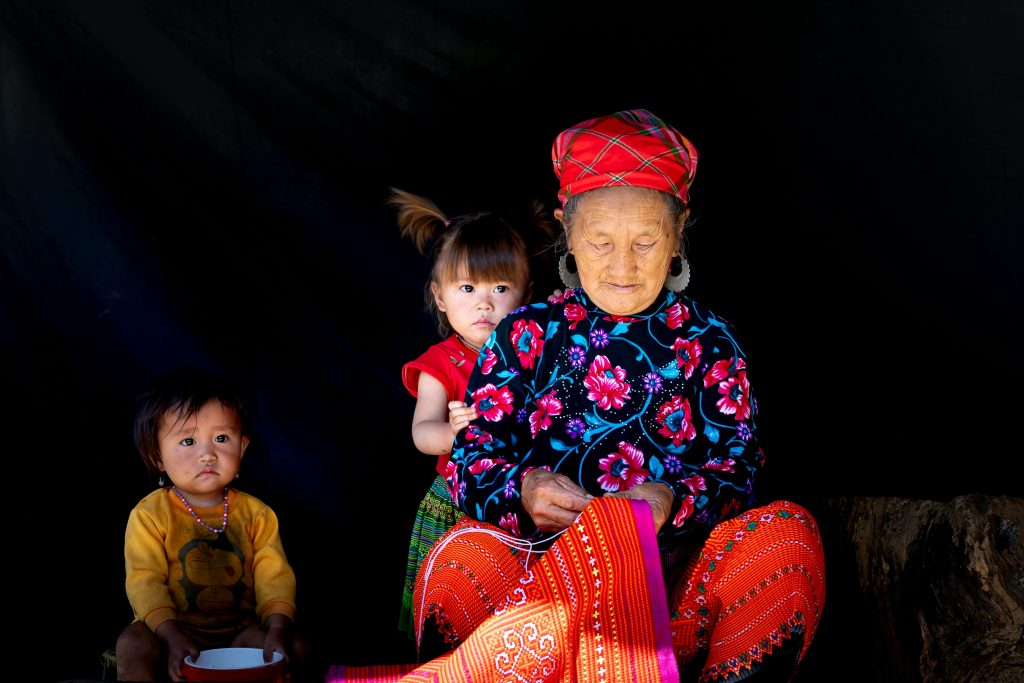
Top 3 Reasons Why Slow Fashion
The foremost reason to choose Slow Fashion is that it gives long-lasting happiness and satisfaction. Others are:-
#1 Because we love our planet
Fast fashion contributes to environmental damage and climate change. The use of excessive water and other natural resources, toxic chemicals, and land and water pollution by the fast fashion industry disrupts the ecological balance of the planet.
Brands have been using synthetic fibres that take many years to decompose. Hence, the clothes ultimately end up in landfills. As opposed to fast fashion, slow fashion is kinder to the planet in more ways than one.
#2 Because we support human rights
Fast fashion is mass-produced, cheap and often neglected. Hence, the brands need to keep their cost of manufacturing low. To ensure low costs, they resort to unethical labour practices.
They even source their garments from factories where labourers are not treated well and paid very low salaries. Often, labourers are children or teenagers who work in unhealthy conditions.
Conversely, slow fashion is often handcrafted, where every piece of clothing is treated with care and caution. Artisans have the entire focus here.
#3 Because we prioritise happiness
Fast fashion is easily bought and quickly discarded. Consumers do not worry about the impact on the planet of discarding synthetic clothes. People who follow trends blindly are often misled by advertising and promotional offers.
They are persuaded to buy clothes and get rid of them quickly. As opposed to popular beliefs, buying fast fashion does not make you feel good or happy or even confident.
People have lost themselves in MeToo fads and have lost their individuality in the process. Slow fashion allows people to express themselves and stand out from the ordinary.
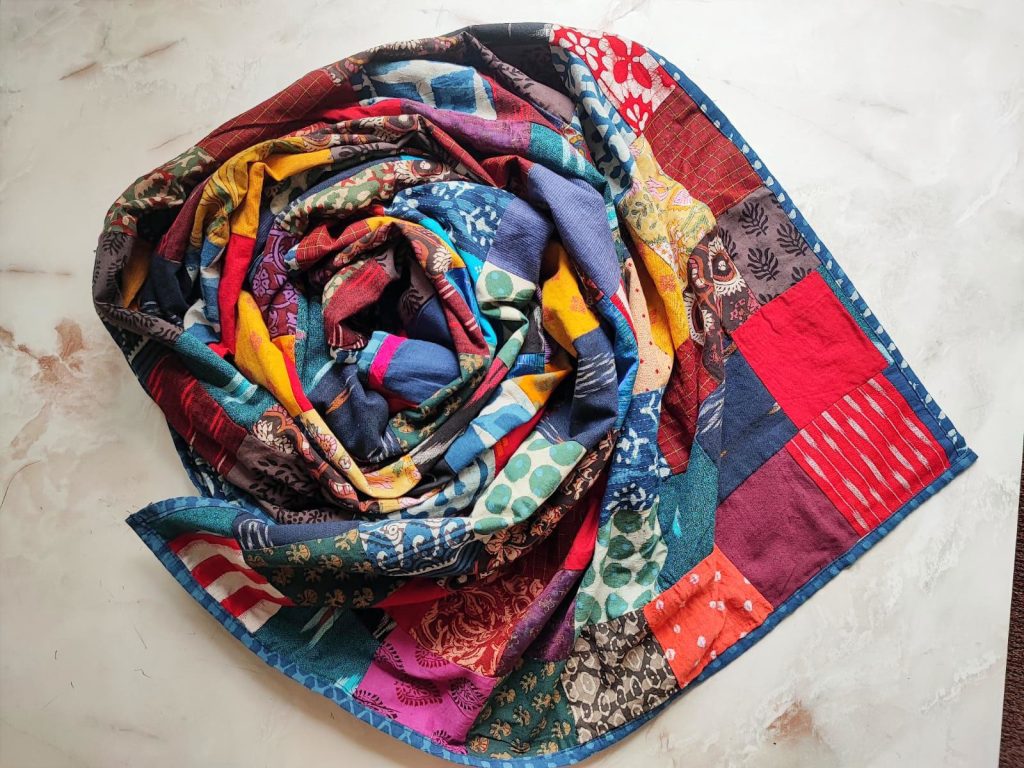
How to give new life to clothes
As slow fashion lasts longer, you are more inclined to give new life to clothing after wearing it multiple times. Here are some ways you can do so without spending much.
Upcycling
Through upcycling, old and worn-out clothes are transformed into functional and stylish garments. It is very different from recycling. Herein, worn-out clothes are creatively used and given a high-end new life.
Upcycling focuses on individuality and results in unique clothing. Patchwork, dyeing, embellishment, etc., are some of the common methods of upcycling old garments.
Recycling
One of the sustainable means, recycling, is a process wherein old garments are broken down into raw materials for creating new products. Recycling helps the fashion industry minimise the requirement for fresh resources to produce clothes.
While there are many benefits of recycling garments, the major ones are sustainability and economic stability. This process aids in reducing textile waste and preventing landfills.
Repurposing
An old technique, repurposing in fashion, refers to the idea of using old clothing for a different purpose than it was originally designed for. For this, the form of the clothing may or may not be altered.
For instance, using an old bed sheet as a curtain. With repurposing, old clothing items that are in good condition are given a new purpose. It helps extend the life of the item.
Accessorizing
It involves adding embellishments or decorations to an old outfit to improve its appearance and functionality. For instance, an old scarf can be used as a belt by adding a closure button.
When a clothing item is used multiple times, one might think of using it differently to curb boredom and style it correctly.
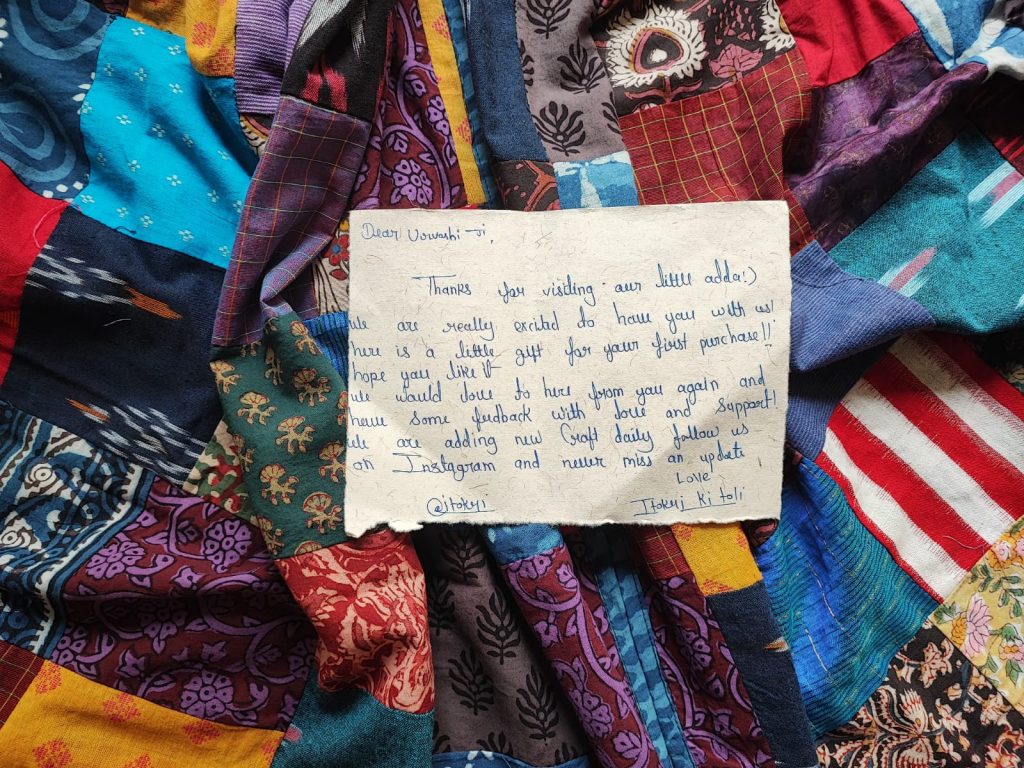
The Art of Patchwork
Patchwork is a method of upcycling wherein different fabric scraps are combined to create intricate and creative patterns. Handmade patchwork is not an easy task. Being labour-intensive, it is thoughtful and personal.
With patchwork, artisans balance colours, textures, and fragments of fabric. It helps salvage each piece of clothing by repurposing it into an item that will always be cherished. It is a feat that AI or machines cannot replicate.
The Art of Patchwork is eco-conscious and emotionally quite rich. It is a rebellion against fast fashion, which is mass-produced and unethical. Such clothing reminds us to slow down and invest in fashion with intention; to value art and not algorithms.
An example of sustainable, slow, and upcycled fashion
I wanted to be a part of sustainable and slow fashion. Hence, I invested in a dupatta from Itokri. This was not just any ordinary dupatta. It is a testimony of textile craft and heritage that I wanted to pass on to my daughter.
Indigo Reversible Patchwork Cotton Dupatta uses the technique of upcycling, where different fabric leftovers are used to create a colourful design on the dupatta. I could trace the origin of the product, which ensures that the product is ethical.
Composed of 100 per cent pure cotton fibre, this dupatta features fine-quality patchwork, and hence it is multicoloured. The beauty of this dupatta is that it can be used interchangeably as it features the famous indigo blockprint on the backside.
A legacy of my own
This dupatta was not just a colourful accessory I invested in. It is a gentle reminder of my great-grandmother’s quilted skirts. Artisans in India use leftover fabrics and stitch them together into skirts, bedsheets, curtains, cushion covers, and many other home decor items.
India is home to varied textiles. Since time immemorial, people have been upcycling, recycling, and repurposing clothing to create beautiful and artistic pieces. This dupatta stands as a testimony to this art of sustainability.
Every patch on this dupatta has a story to tell. The patches of florals, kantha stitches, hand-block prints, paisleys, etc., have come together to turn my outfit into a vibrant mosaic. I will savour it as a potpourri of memories of all the times I will wear it.
Why do I love iTokri?
Every time I buy from iTokri, I receive a handwritten note (written on recycled paper) along with a trinket. The package comes wrapped in newspaper, neatly wrapped in eco-friendly packages.
I am always eager to open the package and read the note full of love that makes the product special for me. Browsing the iTokri website is like walking in the alleys of handloom and handicraft markets – vibrant, colourful, and earthy.
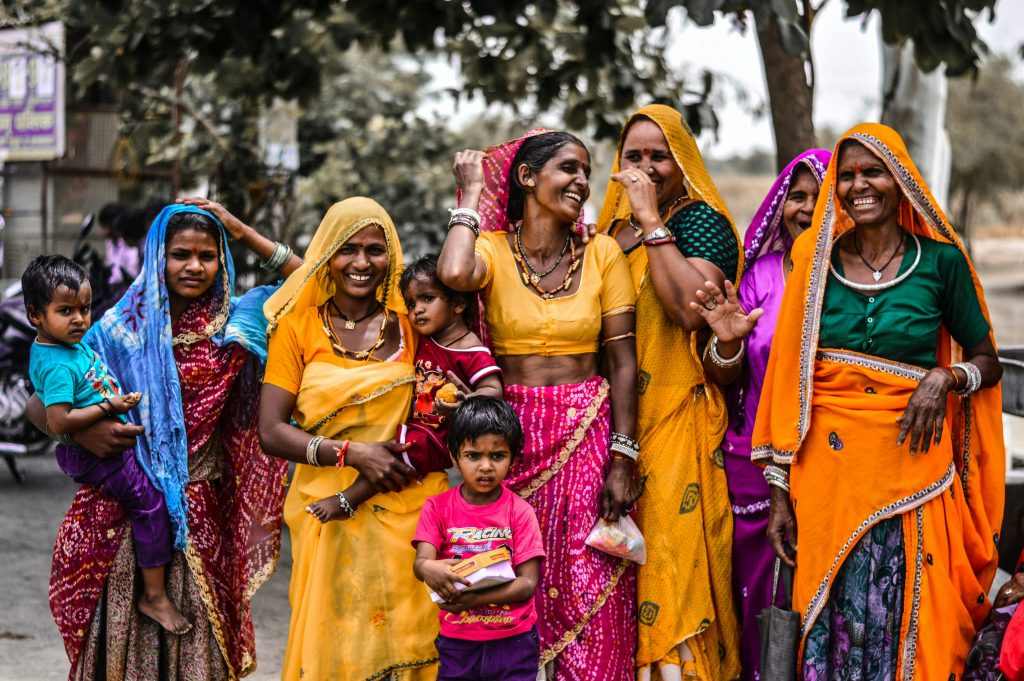
Final Thoughts
Slow fashion is a reminder not to fall prey to big brands and mass-produced clothes. Start seeing fashion as things to cherish and not easily disposable items.
It is a way to help the fashion industry operate at a pace that is healthy for every person involved in it. Clothes produced ethically make you feel grounded and connected to the earth.
Every time you wear something sustainable, it adds warmth and character to your style. Slow Fashion is an ode to skilled artisans who understand that imperfection is the soul of handicraft.
While you support slow fashion, somewhere an artisan and her family are being supported silently.





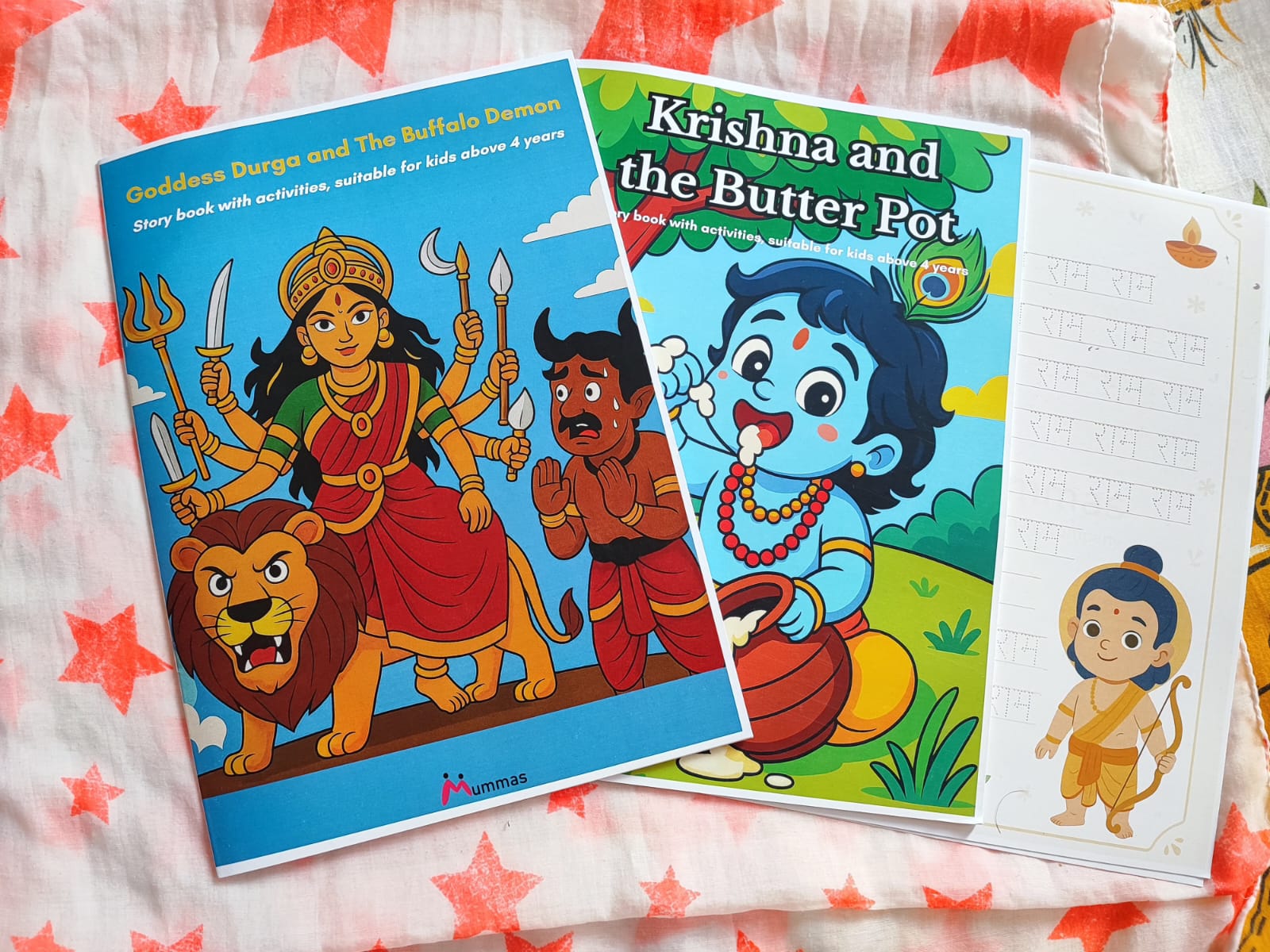


Leave a Reply